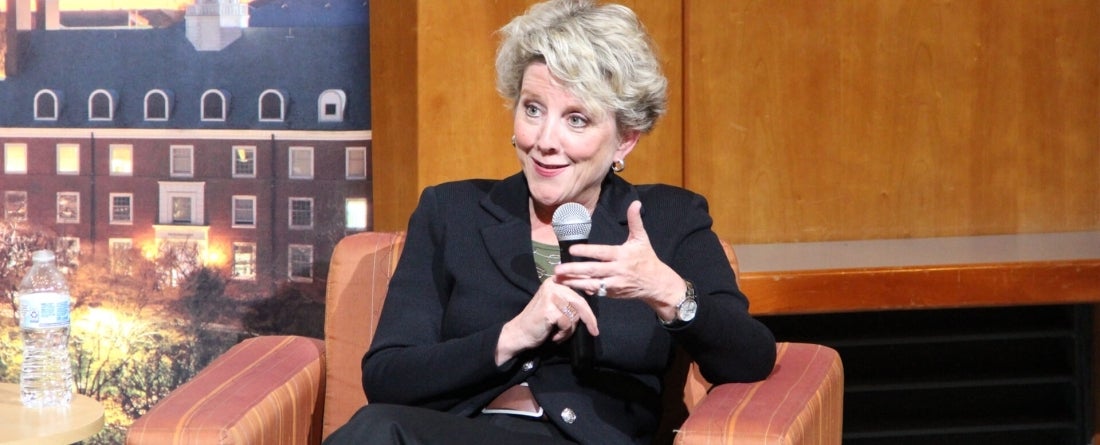
“To do good, you have to get good.” That was the advice Stefanie Sanford doled out to students in the audience at the recent Brody Forum, “Hacking the Future: The Two Codes You Need to Know.”
On May 6, Stefanie Sanford, chief of global policy and external relations at The College Board, spoke to the School of Public Policy community about the two codes students need to master to be successful.
Sanford explained the need for students to understand both technology and the United States Constitution. The two courses given to high school students to encourage them to become fluent in the two codes are AP Government and Politics and AP Computer Science Principles.
“Our speaker tonight is someone I met as a White House Fellow,” said SPP Dean Robert Orr as he introduced Sanford to the audience. “Stefanie Sanford is a wonderful disruptor of systems, of conventional thinking. Our speaker tonight has been talking about civic engagement for decades--long before it was cool.”
You have to match good intentions with knowledge and resources. To do good, you have to get good.Stefanie Sanford
Her passion for democracy started when she was a kid growing up in Texas, Sanford said. She got her Ph.D. at the University of Texas, where she wrote about the intersection of policy, technology and democracy.
Sanford began her speech exploring the idea of “doing good.” She said, “You have to match good intentions with knowledge and resources. To do good, you have to get good.”
“Our society has developed a love-hate relationship with technology,” Sanford said. “People have started to lose trust in technology as they’ve lost trust in civic institutions.”
She went on to say there are changes that need to be made, noting the fact that the technology sector is strong, but it is still a sector dominated by men and lacking diversity. Bridging the two codes of technology and the U.S. Constitution can help change things for the better.
“Facebook could have been a shining example of using two codes--instead it’s a cautionary tale of what happens when you only master one,” Sanford said. Referencing Melinda Gates, Sanford added that diversifying those who write algorithms can help mitigate some of the problems that have come up surrounding new technology.
“The biggest challenge is the difference in pace of participatory democracy and technology changes,” Sanford said.
When speaking about the recent surge in social media activism, she added, “I think what we saw was the organizing capabilities of social media--but what’s next? Social media is very good at getting people together, but the question is when we can we use those tools to make change.”
You can view photos from the event on the SPP Flickr account, and watch the video on the SPP YouTube account.



